 |
|
 |
January 4, 2004
Mono Cliffs 2nd line (West Side)
Meeting report & photos by Alexis Burnett
|
|
|
|
There were 4 of us that showed up for our winter tree I.D.
walk through the Mono Cliffs Provincial Park. The north winds had
brought some cooler temperatures over night and the ground that was
saturated and muddy the day before had become hard and frozen. We
started the day with a short thanksgiving asking the trees to share some
of their knowledge with us.
As we moved down the trail we were greeted by two
large ravens, circling and calling overhead. |
|
|
|
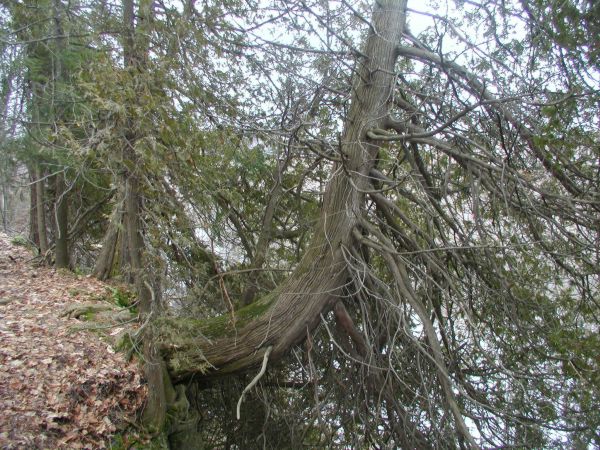
Ancient White Cedar |
|
|
|
We discussed some of the characteristics to
look for such as opposite/alternate, buds and twig size as well as bark
description and habitat. There were many species that we came across.
Here is a list of most of the species that we positively identified:
Sugar Maple, White and Black Ash, Alternate-leafed Dogwood, Red Osier
Dogwood, White Elm, White Birch, American Beech, Large-Toothed Aspen,
Trembling Aspen, Balsam-Poplar, Black Cherry, Ironwood (Hop-Hornbeam),
Northern White Cedar, Eastern Hemlock, Bitternut Hickory, Butternut,
Yew, Yellow Birch, Balsam Fir, Hawthorn, Scots and Jack Pine, and Norway
Spruce.
|
|
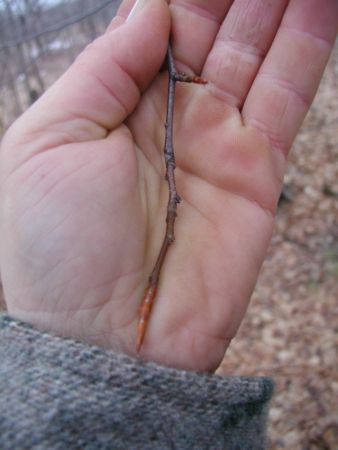
American Beech bud |
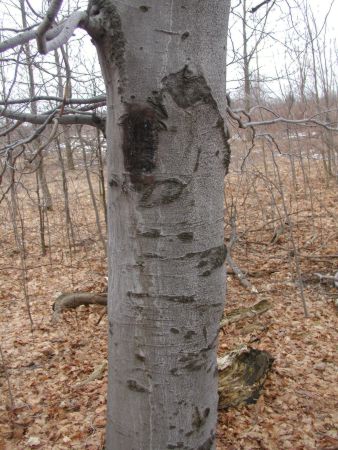
A gnarled old Beech
|
|
|
|
|
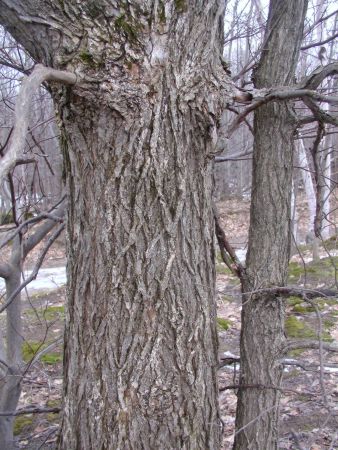
White Elm |
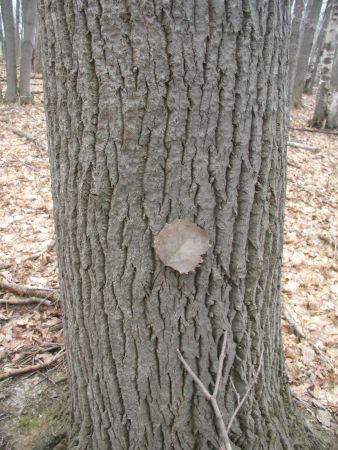
Large-Toothed Aspen
|
|
|
|
|
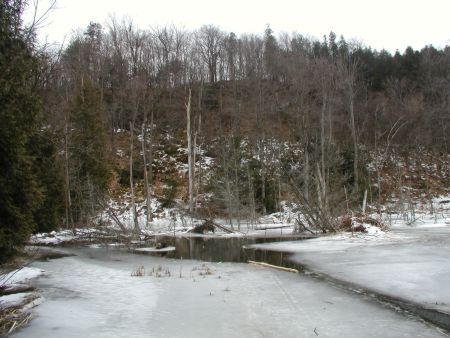 |
Along our travels we also stopped by and investigated
around an active beaver lodge. There were many fresh signs of feeding,
fallen trees and many trails including some amazing beaver tracks that
were frozen into the ice. The beaver was feeding on Yellow & White
Birch, Elm, Cedar, Cherry, and Apple. This seemed to be the most active
lodge out of the three in this area. Are the other two abandoned from
lack of food? It seems that way.
|
|
|
|
|
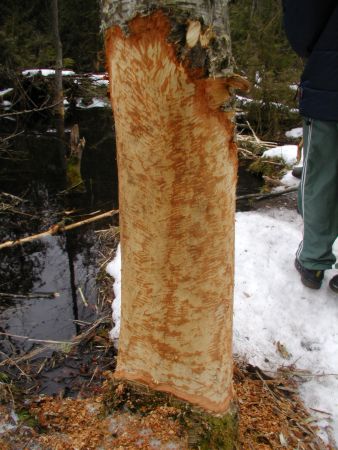
Beaver chews |
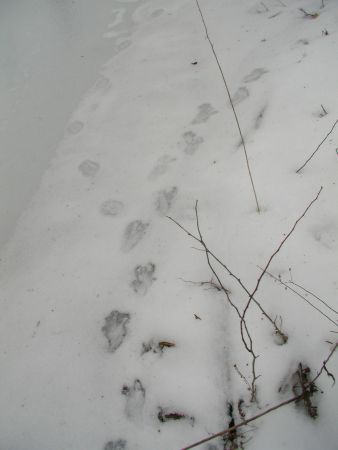
Beaver tracks
|
|
|
|
|
Along the creek we also came across many deer tracks,
trails and scat. There was also two kinds of grouse scat that was the
source of many questions. It appeared to be old and became visible again
with the melting snow. At one point we all stood quietly 25 feet off the
trail as a family walked directly past without noticing us. We thought
how easy a deer could do this.
We came across many growths, scars, cists, fungi and
lichen growing or protruding from many trees and wondered about the
origins of these things and what effect they were having on the trees
themselves. As usual the more we found out that we knew, the more we
realized we didn't know. And the more questions we began to ask. Most
going without answers.
As we returned to the cars we were once again greeted
by two ravens as they flew overhead, which ended a great day. Thanks to
my partners on this day and thanks to the trees for allowing us a brief
glimpse into their lives. |
|
|
|
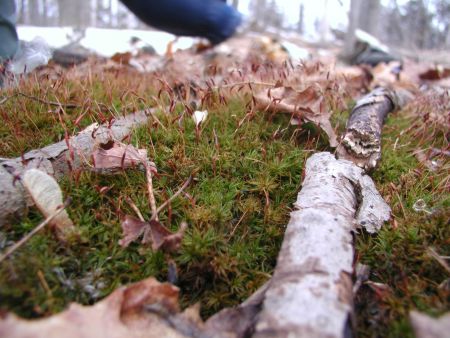 |
| |
| |
|